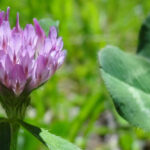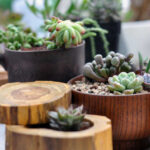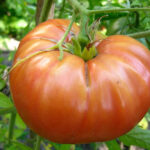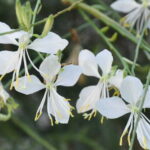In ancient Greece, oregano directly translated to either “joy of the mountain” or “brightness of the mountain”, depending on who you ask. It is from the hilly Greek countryside that it’s believed to have sprung initially. And if you ask any gardener today what herbs they’re growing, it’s likely that they’re growing oregano among them.
Oregano is a perennial that is part of the mint family. The strong and zesty flavor of fresh oregano has made it popular in the culinary world, although it’s perhaps most identified as a major component of Italian cooking. Still, it’s widely used in Mediterranean, Latino, or Argentinian cuisines among others.
A perfect pairing to tomato dishes like pasta and pizza, oregano also plays well with olive oil, meat, and a whole host of other ingredients. It’s likely that easy companionship with other flavors that has brought this Mediterranean herb to the heights it enjoys today!
Growing oregano offers you more than an unlimited supply of this pantry staple. It also is a beautiful foliage plant, occasionally used as a ground cover under other plants. Low-maintenance and hardy, this herb is perfect for even a novice gardener.
Quick Care Guide
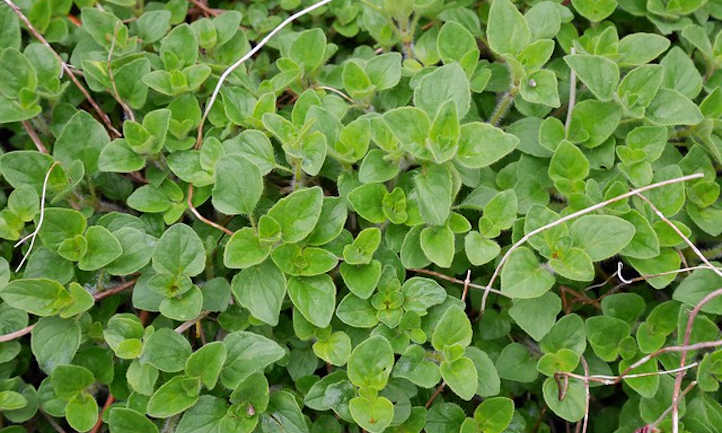
| Common Name(s) | Oregano, wild marjoram, pizza herb |
| Scientific Name | Origanum vulgare |
| Days to Harvest | 45 days to maturity, harvest as needed |
| Light | Full sun to partial shade |
| Water: | Moderate watering needs, drought-tolerant |
| Soil | Well-drained soil, loamy or slightly sandy |
| Fertilizer | Compost or up to 2x yearly balanced fertilizer |
| Pests | Aphids, spider mites, thrips, cutworms |
| Diseases | Mint rust, fungal root rot |
All About Oregano
When discussing oregano plants, Origanum vulgare is the botanical name in question. This is important to know from the outset, as another member of the Origanum family is also a popular culinary herb. Marjoram, also referred to as Origanum majorana, is sometimes called “sweet marjoram”. But our favorite oregano, Origanum vulgare, is referred to on occasion as “wild marjoram” as a result.
When you’re growing oregano, it will reach 1-2 feet tall at its maximum and sprawl to about 18 inches across. Its leaves are small and spade-shaped, a dark green in color. When it flowers, its tiny delicate blossoms are pink, purple, or white. Better yet, those little flowers are edible as well!
The Greeks believed that the herb was created by Aphrodite, goddess of love, and that cows that fed on oregano had the most flavorful meat. That tradition has carried over into cooking. Greek oregano is a popular ingredient in many meat rubs, especially those of Persian origin.
Oregano essential oil is extracted from oregano leaves and is commonly used as a folk remedy. While it’s not used for culinary purposes like the leaves themselves are, it can be a lovely aroma in the home.
Some oregano types have slightly different flavor or coloration than the base plant itself. For instance, golden oregano, Oreganum vulgare “Aureum”, has a paler yellow-green leaf color. “Cleopatra” has a fuzzier leaf surface and a milder flavor with almost a hint of mint, and “Hot & Spicy” adds a kick of potent oregano flavor to salsas or stews. Greek oregano is one of the best-known basic oregano plants, only second in place to Italian oregano with its larger leaf size.
Like many Mediterranean herbs, when you grow oregano you’ll discover quickly that it’s prolific. It spreads with ease, although seldom reaching more than 18”-24” across per plant, and it produces new leaves consistently.
Planting Oregano
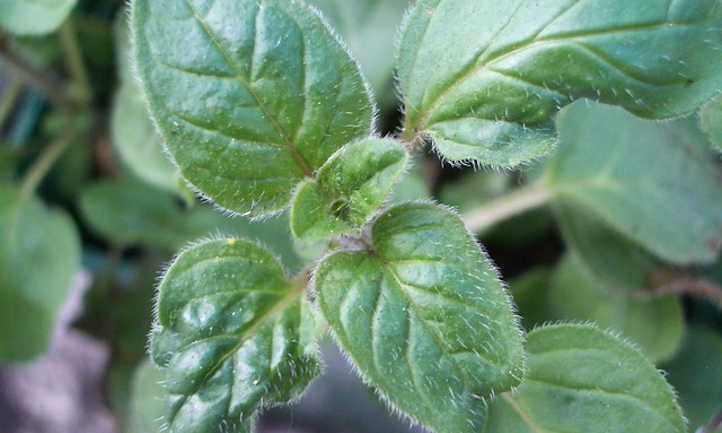
Getting an oregano plant established is actually extremely easy. Let’s discuss planting oregano for the best chances of garden success.
If you’re in an area where the temperature stays above freezing, you can plant oregano and have it growing year-round. However, you’ll still want to plant it in the spring when possible as it has the best chance of getting established before summer’s heat comes on.
Sow seed indoors 6-10 weeks before the last spring frost date. Use a seed starting tray and barely cover the seed with a fine seed starting mix. Keep the soil moist and at a temperature of 70 degrees Fahrenheit. You should have germination in 10-21 days.
Once the seedlings emerge, provide plenty of light. You can place the tray in a sunny window, or put them under a grow light that’s at least 3-4 inches above the plants. Aim for no more than 16 hours a day. When the seedlings have 3 pairs of leaves and are a few inches tall, transfer them to a 3-4” pot size.
When the last frost has passed, harden off your oregano plant outdoors, then plant them in the garden at the same depth they’d been planted in their pot. You can also plant oregano in grow bags (try Root Pouch bags!) or other containers instead of directly in the ground or a raised bed. Make sure your grow bags or pots are at least 10-12” across by 8-10” deep, as this ensures plenty of room.
Those in the warm southern US, particularly in California or Florida, can also plant oregano in that interlude between summer and fall. The plant needs to be established and growing happily in its location before any cold snaps begin, so keep that in mind. Grow oregano easily in USDA zones 5-10.
When transplanting your oregano plant, make sure that it isn’t rootbound. Loosen up the soil around the roots, untangling any roots that are spiraling. Try to spread out the roots when setting it into its container or bed, as this will help young plants stretch out and find sources of moisture.
As long as the growing conditions are right, you can grow oregano plants outdoors as well as indoors. Keep in mind that oregano craves light and sun, so choose a spot that receives full sun, or provide a grow light. This is actually a great candidate as an indoor herb garden plant.
Care
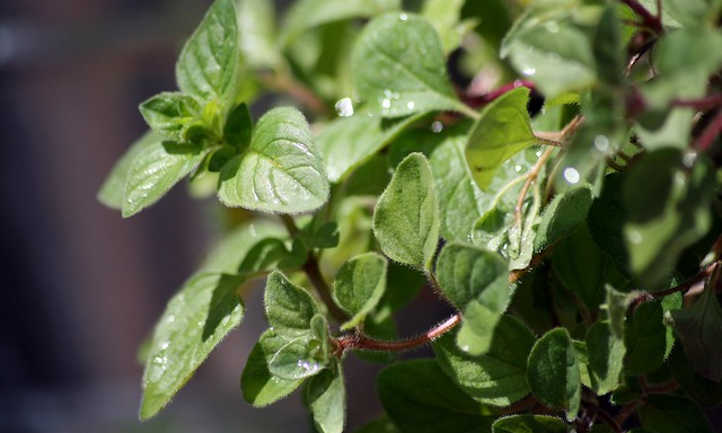
While we’ve talked about planting an oregano plant, we haven’t covered how to grow oregano. Let’s go over the proper care methods for these delicious herbs.
Sun and Temperature
How much sun does an oregano plant need? Oregano thrives where the sun shines. It needs full sun for best development because it’s a lover of bright conditions. Still, if you’re in a particularly unforgiving environment, afternoon shade is a good way to give it a break during the hottest part of the day.
The ideal temperature range for your oregano is between 60-80 degrees during the day, dropping back to 50-60 at night. It can tolerate temperatures down into the 40’s, but it’s frost-sensitive. Those of us in hot climates should consider a little extra shade in the afternoon if the temperatures spike to the high 90’s.
If your plant is likely to be exposed to frosts or freezes, provide a cold frame or floating row cover to add a little protection. In addition, when you plant oregano in pots, it can often be more susceptible to the cold as the plastic doesn’t insulate the roots as well, so consider insulation of some sort around plastic pots.
Watering and Humidity
Like most Mediterranean plants, oregano grows in an area that’s susceptible to drought. As such, they’re fairly drought tolerant plants, but will grow rapidly if they have a little extra water.
Generally, the best approach is to water your oregano deeply and thoroughly rather than many short watering sessions. Wait to water again until the soil starts to dry out a bit. Consider using a soaker hose to provide a slow, oozing watering session at the base of the plant, as this enables the soil to more readily absorb water and reduces the risk of overwatering.
Your oregano plant doesn’t need a specific humidity level to perform well. It’ll tolerate dry or humid conditions with ease. But one thing it will not tolerate is constant standing water, so don’t leave it in a puddle!
Some suggest that letting the soil dry almost completely before a large harvest will result in a more potent, flavorful leaf. If you choose to do this, immediately water post-harvest so that your plant isn’t too stressed out as it tries to sprout new foliage.
Soil
Plant oregano in light, loamy soil, although soil with a slightly sandy consistency is fine too. It should be well drained to reduce the risk of various root or stem rots. Adding a little extra organic matter like a rich compost should provide most of the plant’s nutrient needs.
Soil pH isn’t really a concern; your oregano will perform in a range from slightly acidic to slightly alkaline. Aim for a nice neutral range around 6-7 pH and you should be fine. A pH test kit can help you get a good sense of what your soil pH is.
Fertilizing
If you work in compost at the time you plant oregano, your oregano may not need a whole lot of fertilizer. But like most plants, it doesn’t hurt to give it an occasional feeding. Try not to go overboard, as too much nitrogen can fuel a sudden growth spurt and a lot of less flavorful leaves.
A balanced granular fertilizer applied once to twice a year should be ample feeding for your plants. Aim for a spring feeding and if necessary one towards the mid-to-late summer. You shouldn’t need to fertilize your oregano garden in fall or winter.
Pruning
Most pruning can be accomplished through regular harvesting. If you find yourself to not be harvesting a lot, though, consider occasionally snipping off stems just above a pair of leaf nodes. This will encourage your plant to bush out more and grow more densely.
If the plant looks as though it’s getting leggy, trim off excess length just above a pair of leaf nodes so that new stems can form from the nodes. Leggy plants may be seeking extra sunlight, so if it’s shaded by something, that might be why it’s stretching out. If your plant’s consistently leggy, consider moving it to a sunnier location.
Try to maintain your plant in a range between 12-24 inches tall. Some varieties, like Mexican oregano can reach as tall as 36”, but most stay shorter.
Propagation
Propagating oregano is usually done through seeds or cuttings.
To grow oregano from seed, follow the instructions in the planting section above. You can also direct-sow seeds into the garden when the soil temperature is at 70 degrees Fahrenheit.
But let’s talk about how to grow oregano from cuttings as well. Select a long and particularly healthy stem, at least 5” in length. Use sterile pruning shears to snip it free from the plant, and strip the leaves from the lower 2/3rds of the stem. Dip your stem into water, then into a powdered rooting hormone, and tuck it into some prepared potting soil. Care for it as you would care for any plant cuttings until it has taken root.
Harvesting and Storing

As you can tell, the oregano plant is pretty easy to grow in the garden. But what about the most flavor-packed part, the harvest and use of your carefully-cultivated fresh oregano? Let’s explore the best methods to harvest oregano herb like a pro.
Harvesting
Ideally, wait for your plant to reach about 5 inches in height before you begin to harvest. While the oregano flowers themselves are edible, most people want those flavor-packed leaves. The flavor of those leaves is best before they go into the flowering phase. For a short period during and after flowering, they lose a bit of flavor although they’re still completely edible.
Never harvest more than a third of a given oregano plant at once, as this will stress the plant. If you want to grow oregano for drying or storage purposes, it’s best to have a few plants so you can stagger out the harvest, taking only a little at any given time from a specific plant.
Let’s talk about how to harvest oregano, too. While you can prune off stems if they’re getting a bit long, it’s easiest to simply pluck leaves as needed. When harvesting oregano, the larger and older leaves will usually be the ones to harvest first, leaving the smaller ones to finish reaching full size. Work from the bottom of the plant upward to try to encourage a more bush-like habit instead of a sprawling one.
Storing
To store fresh oregano, rinse off and then pat dry the leaves. Take a dry paper towel and lay the leaves on it in a single layer, then roll the towel to completely surround the leaves. Tuck your oregano-filled towel into a plastic bag and store it in the refrigerator for up to three days.
The best flavor for fresh oregano (and many fresh herbs in general) is right after you harvest it, but you can also use oregano that has been dried. You can hang-dry whole stems of oregano in bundles in a cool and dry place, or place individual leaves in a dehydrator. Either way, avoid heat if at all possible. If your dehydrator produces only warm air, place your leaves as far away from the source of warmth as possible so it can cool on its way to the leaves. Too much heat will reduce the flavor of your stored herbs.
Troubleshooting
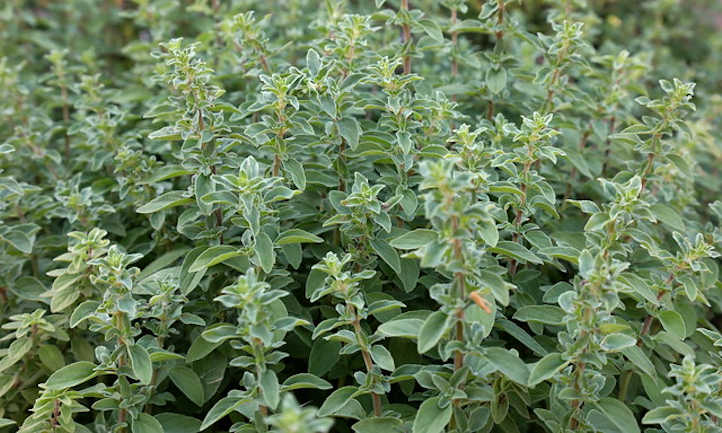
Now that you know how to grow oregano, let’s talk about a few common problems you might encounter. While it’s a hardy plant, there’s still the occasional issue that might arise!
Growing Problems
Most oregano is sensitive to frosts and freezes. While a few cultivars can tolerate very mild frost conditions, most won’t survive through the winter without some form of winter protection.
Pests
Susceptible to multiple piercing/sucking pests, oregano tends to stubbornly live on. But there are a few pests that can cause some problems.
Peach aphids can cluster under the leaves and cause the leaves to distort or turn yellow. For these, regular applications of neem oil works as a deterrent. Insecticidal soaps or pyrethrins can be used to kill off sudden outbreaks.
Spider mites are also prone to clustering under the leaves. These are a bit more identifiable as they will usually be moving and may secrete a web-like fluff. An insecticidal soap can be used here to wipe them out before they, too, can cause leaves to become stippled with yellow dots.
Western flower thrips can cluster on leaves or the flowers of the plant. These, like the other sucking insects, can cause stippling and discoloration or distortion of your oregano plants. They can also transmit a few diseases to your plants. Insecticidal soap, neem oil, or pyrethrin are effective.
Finally, cutworms can attack the newly-transplanted young plants and cut the stems right at the soil line. These usually overwinter in plant debris on the soil’s surface. While your oregano plants are not their preferred target, they’ll certainly go after them in the absence of other plants. You can place a thick ring of diatomaceous earth at the base of your seedlings or encircle them with foil or cardboard at the base to keep cutworms at bay.
Diseases
Two soilborne fungal diseases are common on oregano, and in both cases can cause major damage or death to your oregano.
Mint rust can spread from nearby mint plants to your oregano. This creates pustules on the underside of leaves that can be yellow, orange, or brown in color. Leaves can discolor and die off and may fall from the plant. This one is tricky to control in a herb garden bed, but keeping the foliage dry by watering with soaker hoses at the base can reduce the spread. Regular pruning of your plants to allow for good airflow also slows spread. Destroy severely infected plants, and use a sulfur dust on nearby healthy plants to provide additional protection.
Finally, fungal root rots caused by Pythium fungi can develop in soil that’s consistently waterlogged or overly soggy. Ensure you have well drained soil for your oregano to grow in.
Frequently Asked Questions
Q: Is oregano an annual or a perennial?
A: Oregano (Origanum vulgare) is generally a perennial in warmer climate regions. This member of the mint family can be grown as an annual in colder areas.
Q: Should I soak oregano seeds before planting?
A: No, soaking is not required.
Q: Should I let my oregano flower?
A: You certainly can, especially if you want to taste the flowers. Be forewarned, oregano leaves may lose some flavor during and shortly after the flowering process happens.


